- europages
- >
- COMPANIES - SUPPLIERS - SERVICE PROVIDERS
- >
- resistance welding
Results for
Resistance welding - Import export
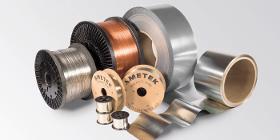
AMETEK SPECIALTY METAL PRODUCTS
United States
HPM® C 276 is a Nickel-Molybdenum-Chromium-Tungsten alloy with a high level of corrosion resistance. A low carbon content enables the alloy to resist intergranular corrosion at weld joints. These attributes make it an important alloy for the most severe chemical processing applications. such as use in metal diaphragms for aerospace sensors and burst discs. The alloy is readily formed from the annealed temper.All standard welding methods except oxy-acetylene can be used for joining. Available Sizes: HPM® C 276 is available from Hamilton Precision Metals as strip product in thicknesses From 0.0005” to 0.050” (0.0127 mm to 1.27 mm) and widths up to 12.0” (304.8 mm). The material conforms to ASTM B575 and UNS N10276.
Request for a quote
AMETEK SPECIALTY METAL PRODUCTS
United States
Phosphor Bronze A is a Copper base spring material with a good combination of strength, formability, and corrosion resistance. The material is suitable for use in certain contact springs and diaphragms. The alloy has good formability up to moderate strength. It can be soldered, silver brazed, and resistance welded. Available Sizes: Phosphor Bronze A is available from Hamilton Precision Metals as strip products in thicknesses from 0.001” to 0.020” (0.0254 mm to 0.508 mm) in widths up to 12.0” (304.8 mm). The material conforms to ASTM B 103 and UNS C51000.
Request for a quote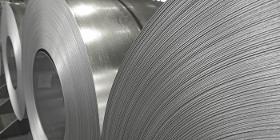
AMETEK SPECIALTY METAL PRODUCTS
United States
Samples from heat 305992 at 0.045” thick in strand annealed condition Evaluation showed strip to be HRB 91, ASTM grain size 6 Weld beads placed on annealed strip via EB welding at International Beam Welding Corp.
Request for a quote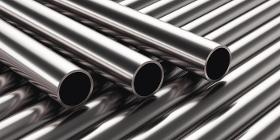
AMETEK SPECIALTY METAL PRODUCTS
United States
Ti 6Al/4V (Titanium Grade 5) is the most widely used of all the alpha-beta titanium alloys accounting for more than 50% of total titanium usuage. It is typically used in the annealed condition, at service temperatures through 400°C (750°F). Ti 6Al/4V is welded with matching or with ELI filler wire. Ti 6Al/4V is significantly stronger than commercially pure titanium while having the same stiffness and thermal properties excluding thermal conductivity, which is about 60% lower in Grade 5 Ti than in CP Ti. Amongst its many advantages, it is heat treatable. This grade is an excellent combination of strength, corrosion resistance, weld and fabricability. In consequence, its uses are numerous such as for military aircraft or turbines. It is also used in surgical implants. Generally, it is used in applications up to 400°C to improve ductility and toughness in cold-worked condition. Please note that we have a minimum order value of £10,000.
Request for a quote
AMETEK SPECIALTY METAL PRODUCTS
United States
HPM ® 270 Nickel is the highest purity Nickel. The controlled low impurity level provides uniform and repeatable mechanical, electrical, and magnetic properties. The material has excellent corrosion resistance with high thermal and electrical conductivities. A high thermal coefficient of electrical resistance makes it suitable for strain gauges, temperature sensors, and electronic components. The alloy can be formed by all conventional cold forming methods, and can be joined by resistance welding, brazing and soldering. The corrosion resistance is generally very good in most mediums, although, it is subject to intergranular embrittlement by sulfur compounds above 315°C Available Sizes: HPM ® 270 Nickel is available from Hamilton Precision Metals as strip product in thicknesses from 0.0005” to 0.020” (0.0127 mm to 0.508 mm) in widths up to 12.0” (304.8 mm). It is available as foil as thin
Request for a quoteDo you sell or make similar products?
Sign up to europages and have your products listed
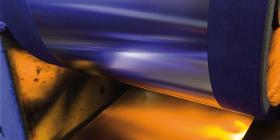
AMETEK SPECIALTY METAL PRODUCTS
United States
SS 436 is a corrosion and heat resistant ferritic Chromium Steel. It can be polished to appear similar to Chromium plate. The material is magnetic in both annealed and cold rolled tempers. This grade of ferritic stainless steel has shown a greater resistance to ridging or roping defects as compared to type 430 stainless steel. The alloy can be readily blanked and formed. The material can be resistance welded, brazed, and soldered. SS 436 is resistant to atmospheric corrosion and fresh water, but it not resistant to most salts and seawater. It is resistant to scaling by oxidation up to about 1400°F. Available Sizes: SS 436 is available from Hamilton Precision Metals as strip product in thicknesses from 0.001” to 0.050” (0.0254 mm to 1.27 mm) in widths up to 15.0” (381 mm). The material conforms to ASTM A240 and UNS S43600.
Request for a quote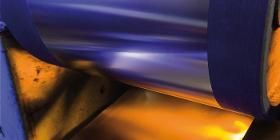
AMETEK SPECIALTY METAL PRODUCTS
United States
SS 430 is a corrosion and heat resistant ferritic Chromium Steel. It can be polished to appear similar to Chromium plate. The material is magnetic in both annealed and cold rolled tempers. The alloy can be readily blanked and formed. The material can be resistance welded, brazed, and soldered. SS 430 is resistant to atmospheric corrosion and fresh water, but it not resistant to most salts and sea water. It is resistant to scaling by oxidation up to about 1400°F. Available Sizes: SS 430 is available from Hamilton Precision Metals as strip product in thicknesses from 0.001” to 0.050” (0.0254 mm to 1.27 mm) in widths up to 12.0” (304.8 mm). The material conforms to ASTM A240, FED QQS 766, and UNS S43000.
Request for a quote
AMETEK SPECIALTY METAL PRODUCTS
United States
The microstructures inside duplex stainless steels are approximately 50 per cent austenite and 50 per cent ferrite, and consequently duplex products share the physical properties of both ferritic and austenitic grades. Duplex stainless steels are resistant to the cracking caused by chloride stress corrosion in austenitic grades, and have improved resistance to localised corrosion. This family of stainless steels has roughly twice the yield strength of their counterpart austenitic grades . Higher hardness values provide better wear resistance for high precision tubes. Duplex stainless steel tubes have high hardness and wear resistance propertiesDuplex steels are easily welded and formed, similar to austenitic grades. Depending on chromium, nickel and molybdenum content, duplex stainless steels are divided into four main categories: lean duplex, duplex, super duplex and hyper duplex. Please note that we have a minimum order value of £10,000.
Request for a quote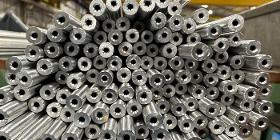
AMETEK SPECIALTY METAL PRODUCTS
United States
Alloy 718 was initially developed for the aerospace industry but its excellent strength and corrosion resistance were recognised by the oil industry and it is now widely used in this field also. Alloy 718 is a nickel-chromium alloy with additions of niobium & molybdenum which can be heat-treated to give high strength, good corrosion resistance, ease of formability and which can be welded with good resistance to strain age cracking. The alloy can be used at temperatures up to 700ºC. Alloy 718 for the oil industry is heat treated such that the hardness does not exceed 40HRC which is the maximum allowed by NACE MR-01-75/ ISO 15156: 3 to prevent stress corrosion cracking. Alloy 718 for aerospace and power generation is heat treated to give maximum strength and high creep resistance with typical hardness values exceeding 42HRC. The major applications are components for gas turbines, aircraft engines Please note that we have a minimum order value of £10,000.
Request for a quote
AMETEK SPECIALTY METAL PRODUCTS
United States
Alloy 276 is a nickel-molybdenum-chromium superalloy with an addition of tungsten designed to have excellent corrosion resistance in a wide range of severe environments. The high chromium, molybdenum and tungsten contents make the alloy especially resistant to pitting and crevice corrosion in reducing environments while chromium conveys resistance to oxidizing media. The low carbon content minimizes carbide precipitation during welding to maintain corrosion resistance in as-welded structures. This nickel alloy is resistant to the formation of grain boundary precipitates in the weld heat-affected zone, thus making it suitable for most chemical process application in an as welded condition. Alloy 276 is widely used in the most severe environments such as mixed acid chemical processing, pollution control, pulp and paper production, industrial and municipal waste treatment, and recovery of sour oil and gas. Please note that we have a minimum order value of £10,000.
Request for a quote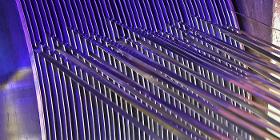
AMETEK SPECIALTY METAL PRODUCTS
United States
HPM® 455 is a precipitation heat treatable martensitic Stainless Steel. The composition provides a good combination of corrosion resistance and heat treated strength favorable for fatigue applications. The material is well suited for demanding spring devices The alloy has reasonably good forming characteristics in the annealed temper considering that it has a hardness of RC30. A significant radius is useful when bending is necessary in a fabrication. Cold working prior to the precipitation hardening treatment can drive finish strength up to 270,000 PSI (0.2% offset yield strength). The alloy retains a good strength through 800°F (Approx. 70% of room temperature). Resistance to stress – corrosion cracking is optimized by heat treating at 950°F. The overall corrosion resistant to normal atmospheric is equal to SS 430 with no staining. The alloy can be welded by resistance and inert gas shielded techniques. It also is suitable for brazing using a flux when possible.
Request for a quoteResults for
Resistance welding - Import exportNumber of results
12 ProductsCountries
Company type